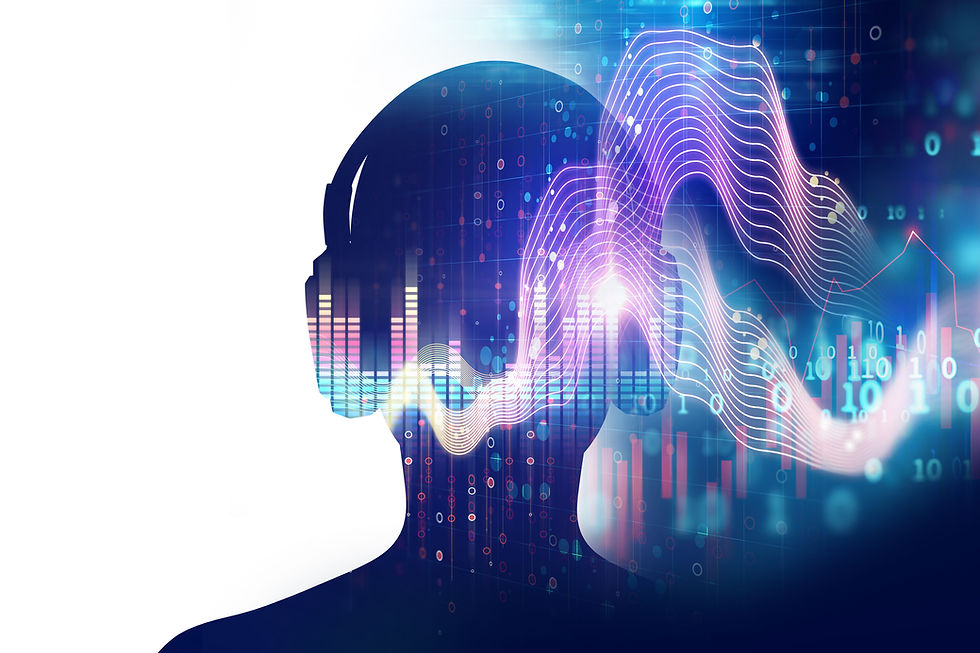Digital Pianos in 2025: Why They Might Be the Best Choice for Your Home
- Electric Piano Land

- Aug 28
- 6 min read
Updated: Sep 9

If you've been considering adding a piano to your home or upgrading your current one, digital pianos are more compelling than ever in 2025. With advances in sound technology, improved key action, and a host of features that support practice and performance, digital pianos have closed the gap between themselves and their acoustic counterparts.
Here’s a closer look at why a digital piano might be the perfect choice for your home, studio, or classroom.
1. Practice Anytime, Anywhere
One of the biggest benefits of a digital piano is silent practice. With a pair of headphones, you can play late at night or early in the morning without disturbing neighbors or family members. This makes digital pianos ideal for apartment living or homes with shared spaces.
In addition to headphone support, many digital pianos include features like volume control, dual headphone jacks for teacher-student sessions, and even ambient reverb simulation to recreate a concert hall sound even when playing quietly.
2. Low Maintenance, Long-Term Reliability
Acoustic pianos require regular tuning (at least twice per year), which can add up in maintenance costs. In Hawaii, where the climate is humid and salt air is a factor, keeping an acoustic piano in shape can be a challenge. Digital pianos, on the other hand, never need tuning and are not affected by temperature or humidity.
That means less stress, fewer appointments, and a consistent sound every time you sit down to play.
3. Built-in Features that Support Learning and Creativity
Most digital pianos in 2025 come loaded with features that support both beginner and advanced players. Here are a few to look for:
Weighted Keys / Graded Hammer Action: A digital piano with weighted keys simulates the feel of an acoustic piano. Graded hammer action means the keys feel heavier in the bass and lighter in the treble, just like on a grand piano.
Polyphony: This refers to how many notes can sound at once. Look for at least 192-note polyphony for a natural, expressive playing experience.
Pedals: Quality digital pianos include damper, sostenuto, and soft pedals. Half-pedaling support allows for nuanced control, which is critical for expressive pieces.
Connectivity: USB and Bluetooth MIDI let you connect to learning apps, DAWs, and notation software. This opens up a world of digital tools for practice, recording, and composing.
Learning Tools: Built-in metronomes, record-and-playback functions, rhythm accompaniments, and lesson modes make it easier to develop skills at home.
Brand Reputation: Yamaha, Roland, and Kawai continue to lead the digital piano market, offering exceptional quality, warranties, and software support.
These tools help players of all levels stay motivated and improve faster.
4. Digital Piano Technology: What’s Inside?
Digital pianos today are far more than just electronic keyboards. At the heart of each model is sophisticated technology that captures and reproduces the sound and feel of an acoustic piano.
Sampling vs. Modeling: Some digital pianos use high-resolution recordings of acoustic instruments (sampling), while others use advanced algorithms to recreate how a piano responds to every nuance of a player's touch (modeling). Modeling often offers more dynamic and expressive play.
Speaker Systems: Built-in speaker systems now feature multi-channel output and speaker placement designed to mimic the sound projection of a grand piano. Some models include speaker resonance and soundboard simulation.
Advanced Expression: Features like damper resonance, key-off simulation, and escapement response add realism to the playing experience.
Connectivity: Bluetooth and USB-MIDI allow integration with recording software, virtual instruments, and even remote lessons. It’s easier than ever to turn your digital piano into a full music studio.
These technological improvements help modern digital pianos deliver a highly expressive and authentic experience for musicians of all levels.
5. Expanded Practice Features for All Skill Levels
Digital pianos excel as educational tools. For students and self-taught players alike, the learning curve becomes easier with the following built-in practice tools:
Onboard Lessons: Many models come with built-in lesson songs and guided tutorials.
App Integration: Apps like Roland Piano Partner 2, Kawai’s Virtual Technician, and Yamaha’s Smart Pianist enhance the playing and learning experience.
Duet Mode: Splits the keyboard into two equal ranges so teacher and student can play side-by-side.
Recording Functions: Players can record themselves and listen back to identify areas for improvement.
Layering and Split Modes: These allow for creative expression, like playing strings with the left hand and piano with the right.
Dual Headphone Jacks: Perfect for lessons or quiet duets without bothering the rest of the household.
For students, families, and even casual hobbyists, these features make practice more fun, productive, and accessible.
6. Quick Digital Piano Buying Guide
When choosing a digital piano, consider the following tips:
Key Count: Stick with 88 keys if you're serious about learning.
While smaller keyboards (61 or 76 keys) may seem appealing for beginners or limited spaces, they won’t serve you well long-term. An 88-key keyboard mirrors a full acoustic piano and gives you the full range needed for classical pieces, complex chords, and dynamic expression. Whether you're a beginner or an advancing player, starting with a full-size keyboard builds proper habits from day one and avoids the need to "upgrade" later.
Action: Look for weighted or graded hammer action.
Not all digital keys are created equal. Cheap keyboards often use spring-loaded keys, which lack the feel of an acoustic piano and can hinder your technique. Weighted or graded hammer action replicates the resistance of real hammers striking strings—heavier in the bass, lighter in the treble. This realism matters, especially for developing finger strength and control. If you plan to transition between acoustic and digital instruments, or eventually play on a grand piano, proper key action is a must.
Polyphony: 192-note polyphony is the sweet spot.
Polyphony refers to the number of notes your digital piano can produce simultaneously. Why does this matter? When you layer sounds, hold sustain pedals, or use accompaniments, high polyphony ensures nothing gets cut off. Many entry-level pianos offer 64 or 128 notes of polyphony, which may be fine for simple pieces. But 192-note polyphony (or more) gives you headroom to grow and explore more demanding music without compromises.
Modern players want more than just great sound—they want versatility. Look for a digital piano with Bluetooth MIDI, audio streaming, and USB connectivity. This opens the door to practicing with learning apps, recording your playing into music software, or streaming music through the piano's speakers. It's also a future-proof investment: as more music education and collaboration happens digitally, a well-connected piano will keep up with your creative needs.
Connectivity: Make sure the model has Bluetooth and USB MIDI support.
Size and Style: Consider your space. Slim-line cabinets and furniture-style designs can match your home decor.
A bulky upright might dominate a room—but digital pianos can blend seamlessly with modern decor. Look for slim-line cabinets or furniture-style consoles that fit your space without sacrificing tone or realism. Some models come in white, dark wood, or even designer finishes to match your aesthetic. And since they’re far lighter than acoustic pianos, rearranging your room or moving homes won’t require a team of movers.
Accessories: Don’t forget a quality bench and triple-pedal unit for realism and comfort.
Think beyond the piano itself. A well-cushioned adjustable bench helps you maintain correct posture, which reduces fatigue and prevents long-term strain. And while some digital pianos come with a single plastic pedal, investing in a triple-pedal unit (damper, sostenuto, soft) gives you the full expressive range of a real piano. If you want an authentic playing experience, accessories matter more than most people realize.
Try different models in person at Electric Piano Land to see what feels best. The right fit will depend on your playing goals, budget, and living space.
7. Real Stories from Hawaii Homes
Piano Planet has helped hundreds of local families find the right instrument. Here are just a few examples:
A family in Kapolei upgraded from an aging upright to a Roland digital. The kids now love practicing and even record their songs for school projects.
A Honolulu apartment owner opted for a slim-line Yamaha with headphones, allowing them to play in the evenings without noise complaints.
A local teacher uses a portable Kawai model to travel between students' homes. It sets up in minutes and sounds amazing in any room.
These real-life stories show how digital pianos are helping local musicians learn, create, and enjoy music on their terms.
8. Final Thoughts & Why Visiting Piano Planet Helps
Ready to upgrade your piano experience? Whether you're a new player or a seasoned musician, Piano Planet Hawaii has the perfect digital piano for your home, studio, or classroom. Explore top models from Roland, Kawai, Yamaha, and more—all available to try in person at our Honolulu showroom.
No pressure, no gimmicks—just honest advice and hands-on help from people who love pianos as much as you do. Stop by and discover how today’s digital pianos can reignite your love for music.
Visit Piano Planet in Honolulu to Try These Models In Person
Digital pianos have come a long way. Come experience the difference for yourself.
Schedule your visit today.





Comments